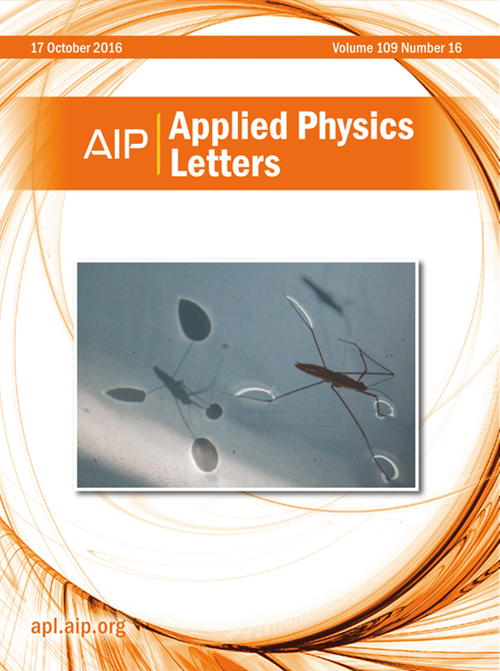One-shot detection of light ellipticity using a two-dimensional quantum material device
IF 3.5
2区 物理与天体物理
Q2 PHYSICS, APPLIED
引用次数: 0
Abstract
Detection of light ellipticity is of crucial importance for target imaging and recognition in complex scenarios. However, it has been challenging to achieve one-shot detection of light ellipticity by a single conventional optoelectronic device, due to coupling between light intensity and polarization. Here, we realize one-shot detection of light ellipticity by using a single four-terminal valley Hall device based on monolayer MoS2 quantum material. The device can decouple the light intensity and the elliptical polarization and enable simultaneous detection of the light intensity and the elliptical polarization by using photoconduction and valley Hall effects. We show that the light ellipticity can be directly detected by measuring the Hall resistance of the device, which is defined as the ratio between the Hall voltage and the photocurrent. Furthermore, we demonstrate that our proposed approach can be used for detecting microplastics present in soil at a higher recognition precision than conventional approaches. Our work highlights the potential of exploiting unique properties of 2D quantum materials for multi-dimensional perception of optical information.利用二维量子材料装置进行光椭圆度的单次检测
光椭圆度的检测对复杂场景下的目标成像和识别具有重要意义。然而,由于光强和偏振之间的耦合,用单一的传统光电器件实现一次检测光椭圆性一直是一个挑战。本文利用基于单层MoS2量子材料的单端四端谷霍尔器件实现了光椭圆度的一次检测。该器件可以将光强和椭圆偏振解耦,利用光导和谷霍尔效应实现光强和椭圆偏振的同时检测。我们发现,通过测量器件的霍尔电阻(定义为霍尔电压与光电流之比),可以直接检测光椭圆度。此外,我们证明,我们提出的方法可以用于检测土壤中存在的微塑料,比传统方法具有更高的识别精度。我们的工作强调了利用二维量子材料的独特特性进行光学信息多维感知的潜力。
本文章由计算机程序翻译,如有差异,请以英文原文为准。
求助全文
约1分钟内获得全文
求助全文
来源期刊

Applied Physics Letters
物理-物理:应用
CiteScore
6.40
自引率
10.00%
发文量
1821
审稿时长
1.6 months
期刊介绍:
Applied Physics Letters (APL) features concise, up-to-date reports on significant new findings in applied physics. Emphasizing rapid dissemination of key data and new physical insights, APL offers prompt publication of new experimental and theoretical papers reporting applications of physics phenomena to all branches of science, engineering, and modern technology.
In addition to regular articles, the journal also publishes invited Fast Track, Perspectives, and in-depth Editorials which report on cutting-edge areas in applied physics.
APL Perspectives are forward-looking invited letters which highlight recent developments or discoveries. Emphasis is placed on very recent developments, potentially disruptive technologies, open questions and possible solutions. They also include a mini-roadmap detailing where the community should direct efforts in order for the phenomena to be viable for application and the challenges associated with meeting that performance threshold. Perspectives are characterized by personal viewpoints and opinions of recognized experts in the field.
Fast Track articles are invited original research articles that report results that are particularly novel and important or provide a significant advancement in an emerging field. Because of the urgency and scientific importance of the work, the peer review process is accelerated. If, during the review process, it becomes apparent that the paper does not meet the Fast Track criterion, it is returned to a normal track.
 求助内容:
求助内容: 应助结果提醒方式:
应助结果提醒方式:


